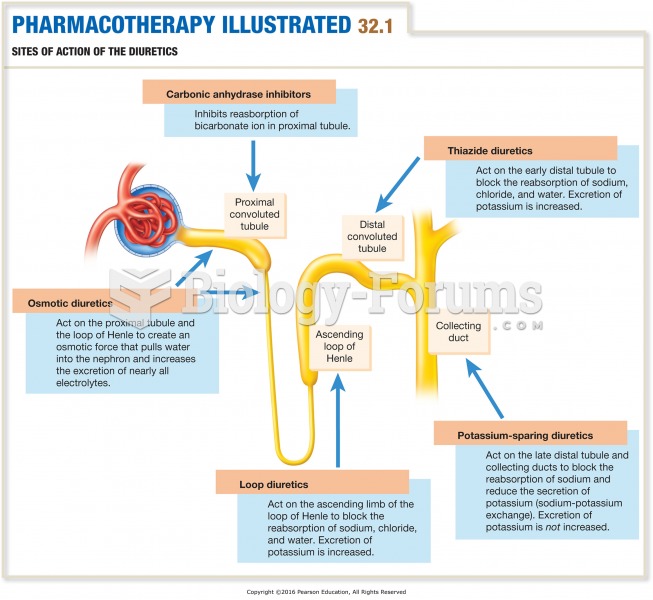Answer to Question 1
Correct Answer: 2
Rationale 1: It replaces electrolytes is incorrect because crystalloids are IV solutions that promote urine output, enter the cells, and replace fluid and electrolytes that have been lost.
Rationale 2: Dextran 40 is an example of a colloid replacement fluid. Colloids are proteins or large molecules that remain suspended in the blood for a long time because they are too large to cross membranes. They draw water molecules from the cells and tissues into blood vessels by their ability to increase osmotic pressure. These agents are sometimes called plasma or volume expanders.
Rationale 3: It leaves the blood and enters cells is incorrect because crystalloids are IV solutions that promote urine output, enter the cells, and replace fluid and electrolytes that have been lost.
Rationale 4: It promotes urine output is incorrect because crystalloids are IV solutions that promote urine output, enter the cells, and replace fluid and electrolytes that have been lost.
Global Rationale: Dextran 40 is an example of a colloid replacement fluid. Colloids are proteins or large molecules that remain suspended in the blood for a long time because they are too large to cross membranes. They draw water molecules from the cells and tissues into blood vessels by their ability to increase osmotic pressure. These agents are sometimes called plasma or volume expanders. Replace electrolytes is incorrect because crystalloids are IV solutions that promote urine output, enter the cells, and replace fluid and electrolytes that have been lost. Leave the blood and enter cells is incorrect because crystalloids are IV solutions that promote urine output, enter the cells, and replace fluid and electrolytes that have been lost. Promote urine output is incorrect because crystalloids are IV solutions that promote urine output, enter the cells, and replace fluid and electrolytes that have been lost.
Answer to Question 2
Correct Answer: 2, 4
Rationale 1: Epistaxis is not a side effect of thiazide diuretics.
Rationale 2: Dehydration is possible because of fluid loss, and patients could experience dizziness due to hypotension when moving from a supine to an upright position.
Rationale 3: Thiazides can cause hypokalemia.
Rationale 4: Dehydration is possible because of fluid loss, and patients could experience hypotension.
Rationale 5: Thiazide diuretics do not cause hypocalcemia.
Global Rationale: Dehydration is possible because of fluid loss, and patients could experience dizziness due to hypotension when moving from a supine to an upright position. Epistaxis, hyperkalemia, and hypocalcemia are not side effects of thiazide diuretics.







